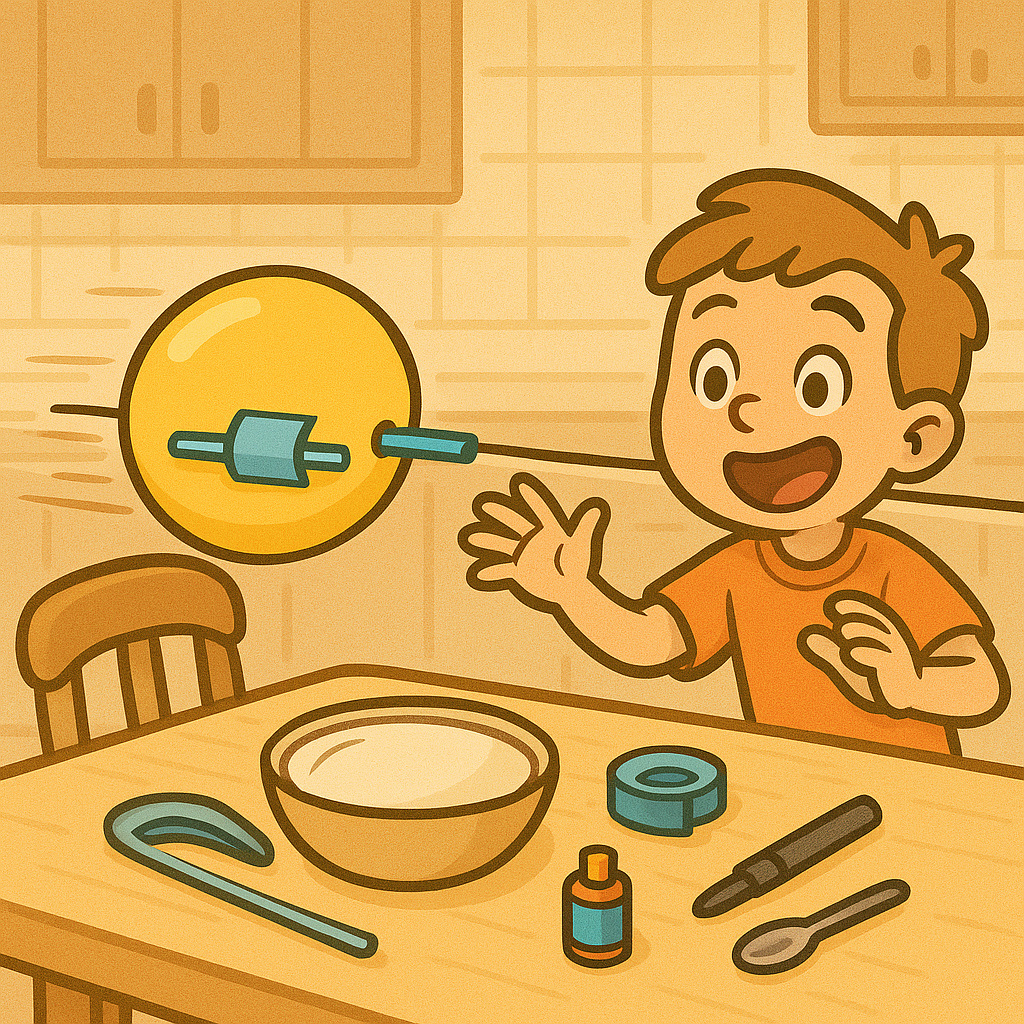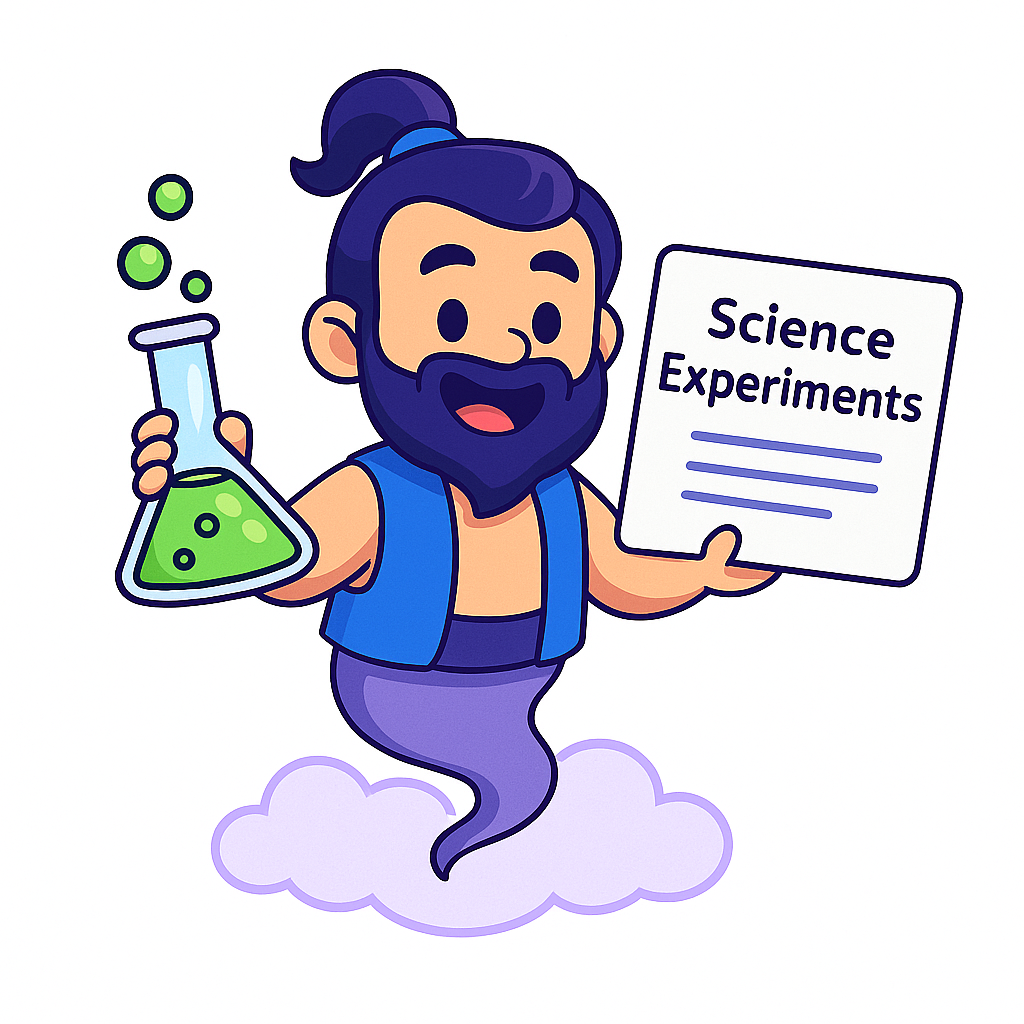 Balloon Rocket Race:
Balloon Rocket Race:
Learn About Newton’s Third Law with a Flying Balloon!
Learn About Newton’s Third Law with a Flying Balloon!
Get ready to race! The Balloon Rocket Race is an exciting, hands-on science experiment that lets kids explore air pressure, forces, and Newton’s Third Law of Motion—right at home or in the classroom. By building your own balloon-powered “rocket,” you’ll see how releasing air can push a balloon forward along a string, just like a real rocket uses fuel to blast into space. This STEM activity is a fantastic introduction to basic physics for students in grades 3–6, and it’s super fun for curious kids and families!
Experiment Details
- Grade Level: 3rd–6th Grade (adaptable for K–8)
- Key Topics: Air Pressure, Newton’s Third Law, Forces & Motion
- Estimated Time: 20–30 minutes
- Mess Factor: Very Low
Purpose: To demonstrate how air pressure escaping from a balloon can create motion, showing Newton’s Third Law in action.
Hypothesis: If I blow up the balloon more, then the balloon rocket will move faster and farther because more air will push it along the string with greater force.
What You’ll Need
- 1 long piece of string (about 10 feet)
- 1 standard round balloon
- 1 drinking straw
- 2 chairs or stable objects to tie the string between
- Masking or scotch tape
- Measuring tape or ruler (at least 10 feet)
- Stopwatch or clock with a second hand
- Marker (optional, for marking start and finish lines)

Step-by-Step Instructions
- Tie one end of the string to the back of a chair or a stable object.
- Stretch the string tightly across the room and tie the other end to another chair or object at the same height.
- Thread the drinking straw through the string so it can slide freely along the string.
- Blow up the balloon but do NOT tie the end. Pinch the opening to keep the air inside.
- Tape the balloon securely to the straw, making sure the balloon’s opening points backward along the string (opposite to the direction you want it to go).
- Hold the balloon’s opening closed and place the balloon at the starting end of the string.
- When ready, release the balloon’s opening and start the stopwatch at the same time.
- Watch the balloon move along the string until it reaches the other end.
- Measure how far the balloon traveled (should be the full length of the string) and record the time it took.
- Try the experiment again by blowing up the balloon to different sizes and see how it changes the speed.

Results & Scientific Explanation
When you release the balloon, air rushes out of the opening, pushing backward on the air. Thanks to Newton’s Third Law of Motion, for every action, there is an equal and opposite reaction. The force of the air moving out pushes the balloon forward along the string. The more air you put in the balloon (the bigger the balloon), the stronger the force—and the faster and farther your rocket will travel. This experiment is a perfect, visual way to help kids understand how rockets, jets, and even toy cars can use forces to move.
- Action: Air escapes the balloon (moving backward).
- Reaction: The balloon is pushed forward along the string.
- Variables to test: Try different balloon sizes, string lengths, or angles to see how they affect speed and distance.
What Is Newton’s Third Law?
Newton’s Third Law of Motion says that for every action, there is an equal and opposite reaction. Rockets use this principle to launch into space—the fuel pushes out, and the rocket goes up! Your balloon rocket works the same way.
Learning Objectives
- Understand how air pressure can create force and motion.
- Explore Newton’s Third Law: every action has an equal and opposite reaction.
- Practice measuring distance and timing speed.
- Enhance problem-solving by adjusting balloon size or angle to change speed.
Teacher & Parent Tips
- Make sure the string is pulled tightly and straight for best results.
- Use different balloon sizes to compare results and discuss how force changes.
- Remind students to hold the balloon opening closed before release to control the start.
- Encourage students to measure time and distance carefully for analyzing speed.
- Try angles: slant the string up or down to see how gravity affects motion.
Standards Alignment
NGSS 3-5-ETS1-2: Generate and compare multiple possible solutions to a problem based on how well they meet the criteria and constraints of the design problem.
NGSS 5-PS2-1: Support an argument that the gravitational force exerted by Earth on objects is directed down.
NGSS 5-PS2-1: Explain the motion of an object by applying Newton’s Third Law.
Printable Worksheet
Want a ready-to-use printable version for your class or homeschool?

Frequently Asked Questions
Yes! The larger the balloon, the more air it can hold. More air means more force pushing out, so the balloon rocket can travel faster and farther along the string.
If the string is not tight, the straw (and balloon) will have trouble sliding. For the best rocket race, keep your string as straight and tight as possible!
The balloon moves forward because the escaping air pushes backward, creating an equal and opposite reaction that sends the balloon rocket zooming along the string.
Balloons work best, but you can experiment with other light, inflatable objects. Try to find something you can inflate and that will fit on the straw!
Related Experiments
- Lava Lamp in a Bottle
- Dancing Raisins
- Homemade Rock Candy Crystals
- See All Science Experiments & Generator
Share Your Results!
Did you try this experiment? Share your photos, results, or questions below!
⭐ What Parents & Teachers Are Saying
Recent Feedback
There are no reviews yet. Be the first one to write one.
